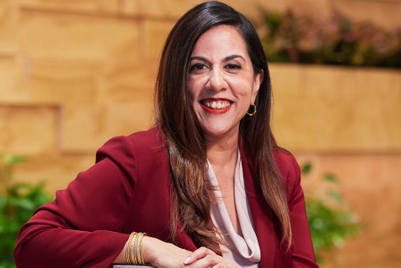
Markets across Southeast Asia are going through a shift in affluence and maturity as the region is reaching an inflection point, triggering growth momentum. As people become wealthier, access to the internet has risen rapidly. The COVID-19 pandemic has accelerated the process, 60 million new consumers in Southeast Asia have joined the digital economy during the pandemic alone. The regional demographics is also young and digitally savvy.
This adoption of technology, both hardware and digital services are creating a more level playing field, enabling people to tap into a new generation of income earning opportunities and improve their lives in a way that was not accessible before.
Despite this, 70% of the population across the region remains unbanked or underbanked, with the biggest barrier to greater financial inclusion being lack of education on personal finance and consumers not knowing which products are right for them.
Filling the gap: Promoting financial growth
Consumers in this region are actively seeking out reviews and trusted voices when making serious purchasing decisions, with around 40 to 60% of Southeast Asian internet users using social media influencers and KOLs as a main source of information when deciding which financial products to buy, how to save money or get rewarded for making better financial choices.
In Singapore, Aaron Wong, otherwise known as The MileLion, has curated a unique brand based on travel miles through credit cards and since his launch in 2015, has gathered over 12,000 individuals to join his community dedicated to travel hacking. Similarly, SG Budget Babe founder, Dawn Cher, saw success in branding herself as an ordinary Singaporean who deals with financial issues. Her following has rapidly grown since her first post: “How I saved $20,000 in a year—sharing insights from using expense-tracking applications to cutting down on café-hopping. Both Aaron and Dawn’s humble, down-to-earth style of communication and relatable stories have meant they have been able to easily resonate with the public and have provided companies with authentic voices to help promote their brands.
Creators, like Aaron and Dawn, are further driving the growth of an industry that is set to only get bigger. There are about 50 million creators worldwide currently with the creator economy market estimated to reach US$104 billion by the end of 2022.
Challenges
The changes brought about by the creator economy are going beyond just financial inclusion and are also accelerating inclusive growth from a gender parity perspective across Southeast Asia. Today, women across the region can become creators and generate income on digital channels, providing an opportunity to break away from more traditional caregiving roles.
Despite its massive growth potential in the region, a career as a creator still has a long way to go to be seen in the same light as professions such as doctors, engineers, lawyers, and professors. A lot of that also comes from generational stigma against the creative sector being one without a viable income, with parents in Asia wondering when you’ll get a ‘real job’ and an actual career and society not taking you seriously.
Also, while creators can be brilliant at creating compelling content, many struggle with the transition to making it a full-time occupation as a result of not knowing how to effectively monetise their content in a meaningful way.
First, creators are often under-compensated on social media platforms. According to a 2018 Fortune report, the top 3% most viewed channels on YouTube only received US$16,800 per year from ads revenue, while the remaining 97% gained even less. Second, creators are realising that they need to diversify their revenue streams away from social media platforms and move to recurring brand partnerships.
But with brands and digital platforms recognising the growing power of the creator to reach consumers, change is starting to come as transparent pricing terms and monetization models are introduced. Choosing to work with a brand or work with a creator will become as easy as shopping on Amazon, instantly matching with the best partner and clicking into your basket.
The way forward
Platforms are also becoming community-led, where both creators and their audience members can have greater upside and be rewarded based on their contribution and involvement.
As the sector continues to develop, the regulatory landscape will also mature, demanding accountability from both brands and creators and offering more protection to the consumers. In these instances, digital platforms that connect creators and brands will play a vital role in the vetting process with robust know-your-customer (KYC) and know-your-brand processes (KYB).
Given the above, the macro conditions are favourable to propel the Southeast Asian creator economy into a multi-billion-dollar industry within the next few years. But all participants should be aware - growing income, shared benefits and a shared purpose of inclusion will be key deliverables to align with the interests of the new creator-led community.




.jpg&h=334&w=500&q=100&v=20250320&c=1)
.jpg&h=334&w=500&q=100&v=20250320&c=1)
.jpg&h=334&w=500&q=100&v=20250320&c=1)
.jpg&h=334&w=500&q=100&v=20250320&c=1)



.jpg&h=334&w=500&q=100&v=20250320&c=1)




.png&h=268&w=401&q=100&v=20250320&c=1)
.jpg&h=268&w=401&q=100&v=20250320&c=1)
.png&h=268&w=401&q=100&v=20250320&c=1)
.jpg&h=268&w=401&q=100&v=20250320&c=1)
